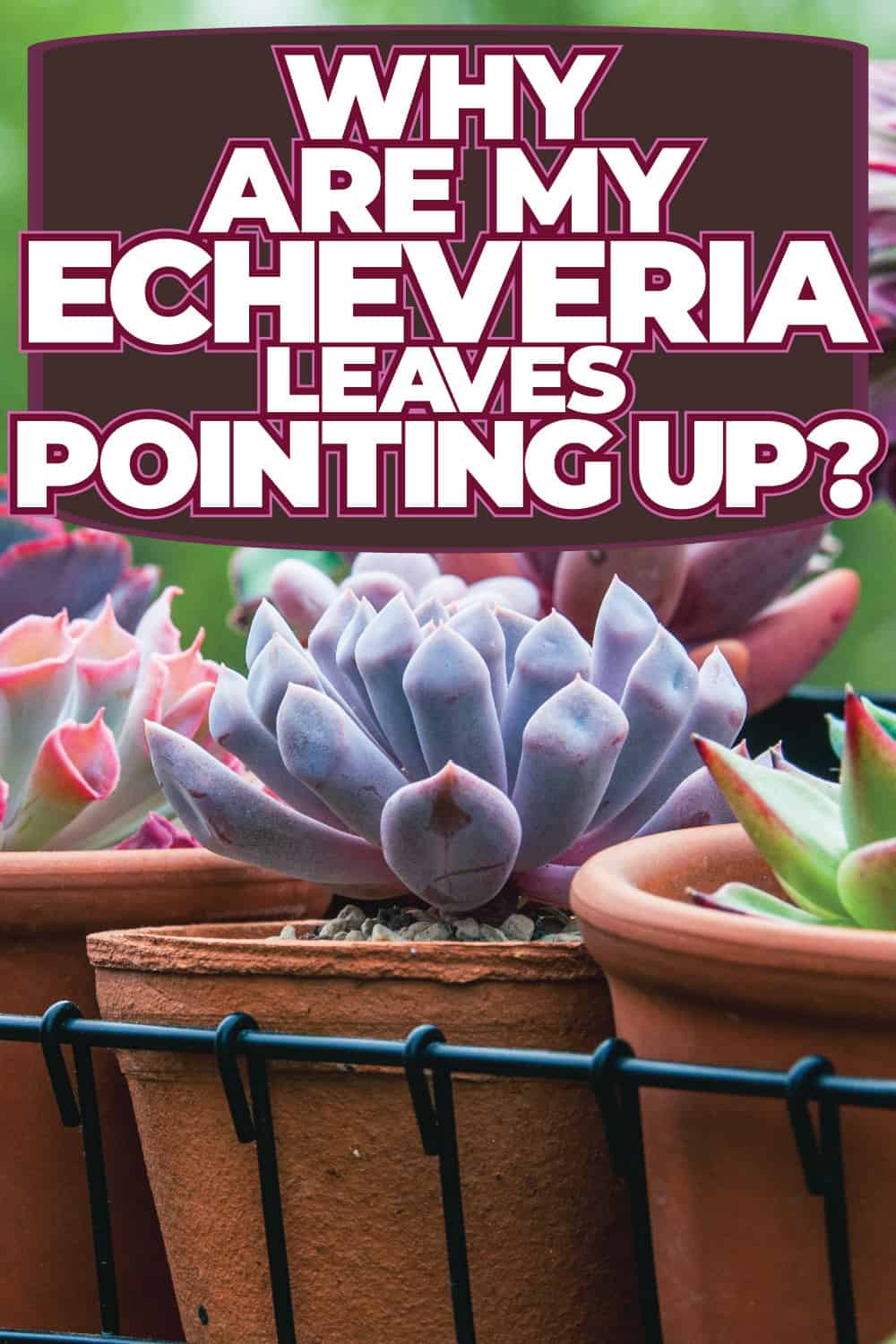Echeverias can easily be identified among other succulents by their beautiful and compact rosette leaves. Typically, these leaves grow in a cascading manner, but if they suddenly start pointing up, what could be happening? We did some research to learn why and here's what we found out.
If your echeveria leaves are pointing up, there's no need to worry because this is normal, especially with some echeveria varieties that have naturally upright leaves. If the plant is growing compact and the leaves look healthy, then the plant is just fine.
However, if the mature leaves suddenly started to point up with clear signs of drying and wilting, here are the possible reasons:
- It's a young leaf growth
- Not enough or too much sunlight
- Overwatering or underwatering
Now that you know why it's pointing up, you might be wondering what's the next thing to do. Read on below and read up on the information we gathered on how much sunlight they need, where best to place them, and other echeveria care tips.
Why Is My Succulent Pointing Upwards?
Echeverias come in around 150 different varieties and their leaves vary widely. Some leaves are thin, thick, plump, furry, flat, or smooth. They also come in different shades.
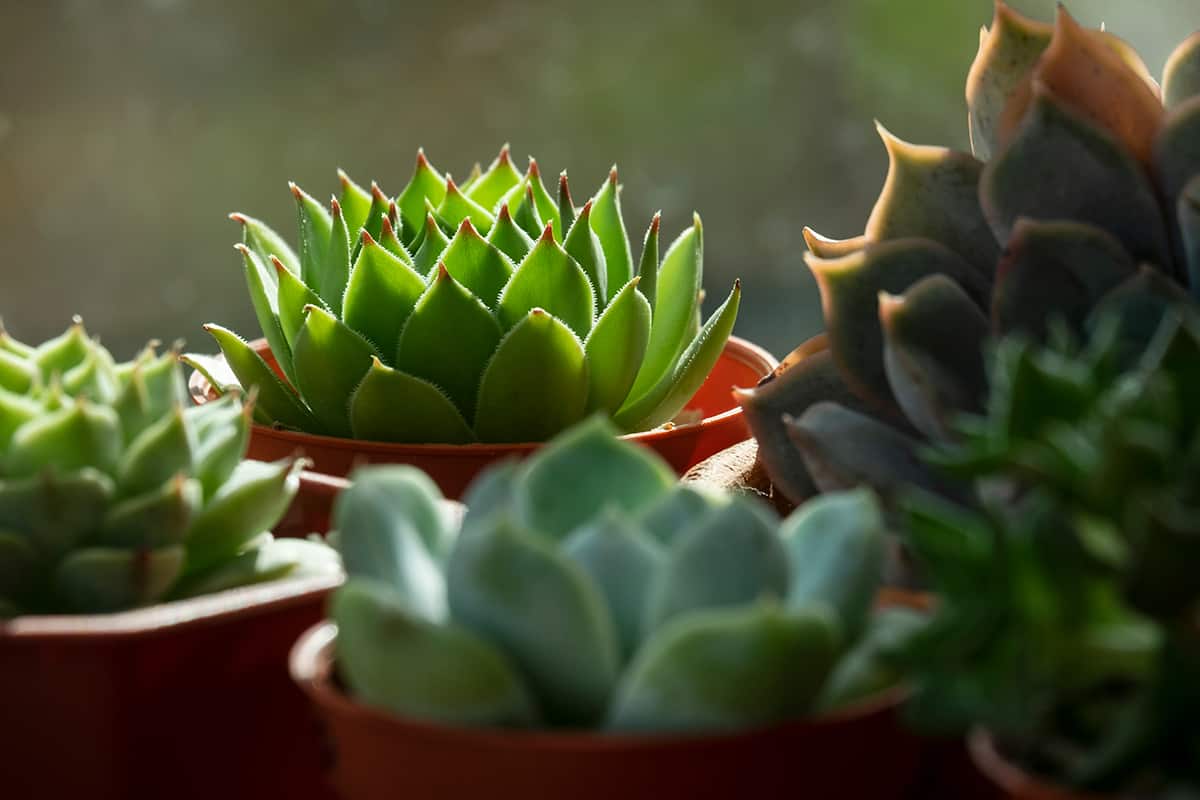
But one thing they have in common is that the leaves grow circular around the stem and cascade into a neat and tight, compact plant. Because the leaves are often short and plump, it is normal for them to point upward.
With more than a hundred varieties of echeveria, it is important to note that some of them have leaves that are naturally pointing upwards. Some of them include the
But sometimes, the leaves don't grow in the way that you expect. If you notice your echeveria leaves pointing upwards with unusual signs of drying, curling, or wilting, here are some of the possible reasons.
It's A Young Leaf Growth
If the leaves in the middle of your echeverias are pointing upwards while the rest are laying horizontally, don't think much about it because this is a normal occurrence in many succulents. The leaves that are pointing upwards are young shoots that are still in the transition phase from a young leaf to a mature one.
Echeverias grow and form new leaves from the top of the stem. The new leaves that come out always point upwards. As the leaves grow bigger and new ones form on top, the mature ones are pushed to the bottom layers horizontally.
Not Enough Or Too Much Sunlight
If your echeveria leaves are suddenly pointing up, it means the plant is not getting the right amount of sunlight. The leaves will elongate and bend towards the direction where they can get the maximum amount of light. Echeverias need about 5 to 6 hours of morning sun daily for them to thrive.
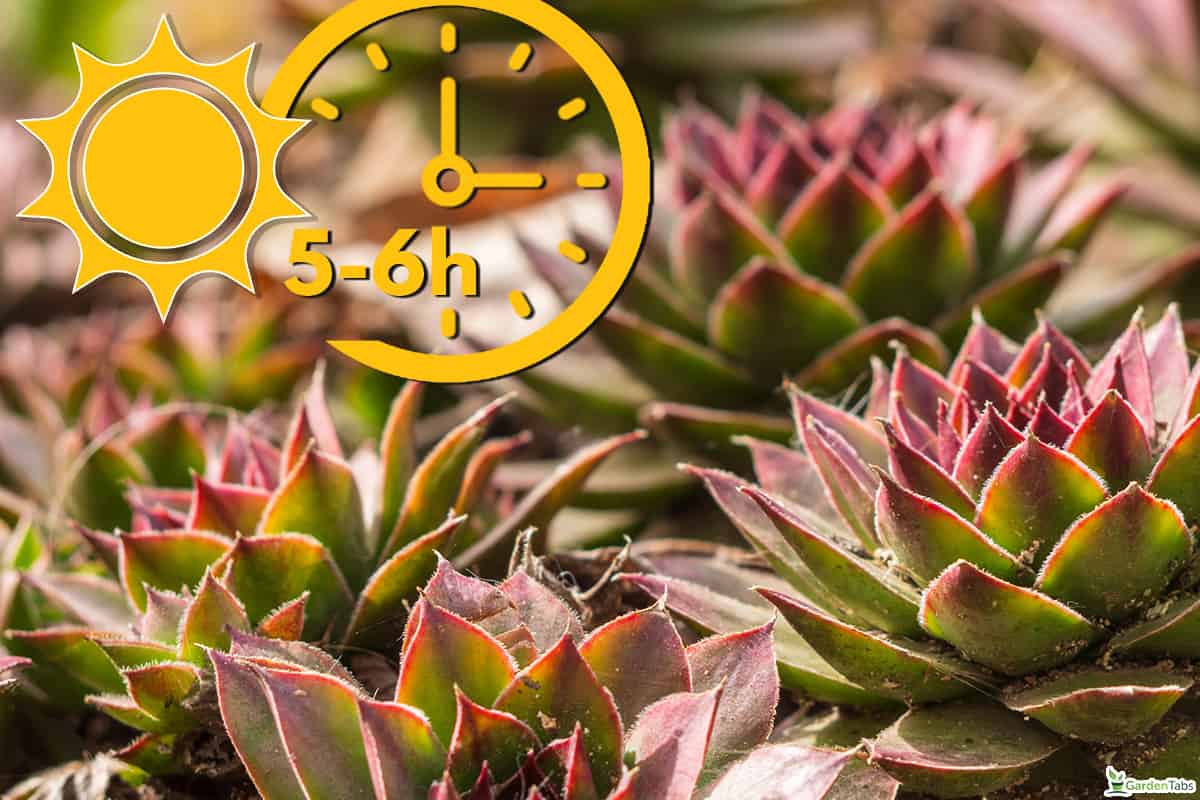
Read more about echeveria sunlight requirements in this article: https://gardentabs.com/does-echeveria-need-full-sun/
If the leaves are shriveling and pointing up, it's possible that your echeveria is getting too much sunlight, especially if the tips appear burned. When this happens, move it away from direct sun exposure to an area where it can still get a good amount of morning sun without the rays directly scorching the leaves.
Although most succulents love the sun and can adapt to various climate conditions, there are just some varieties that tolerate the sun more than others. For instance, the Flaming Katy echeveria variety cannot tolerate excessive heat while the Agavoides love the full sun.
Check out this 4 inches live Echeveria Agavoides on Amazon.
Newly replanted and young echeverias are more sensitive to light and temperature changes so it's best to keep them away from too much direct sunlight. Give them indirect sunlight then slowly introduce them to direct light a few hours a day at a time.
Overwatering Or Underwatering
If the leaves are wrinkly and start pointing up, down, or inwards, the problem could either be the lack of or too much water.
Overwatering can cause the roots of the plant to rot and once there's a problem with the roots, it will show in the leaves. To remedy this, make sure the soil is draining properly and if not, change it if necessary.
Your initial reaction to overwatering may be to stop watering it completely for a long time, but this will only escalate the problem. The proper remedy is to water it on a more regular schedule once or twice a week, using less water when you do.
On the other hand, underwatering can cause the leaves to wrinkle. To remedy this, just go ahead and give your echeveria the usual amount of water. Pouring too much to make up for lost moisture is not a good idea. Instead, stick to a regular watering schedule and your plant should perk right back up.
In many cases, it is easier to save a succulent that has been underwatered compared to one that's been overwatered. Once the root starts to rot, it's very difficult to save the plant.
Should I Mist My Echeveria?
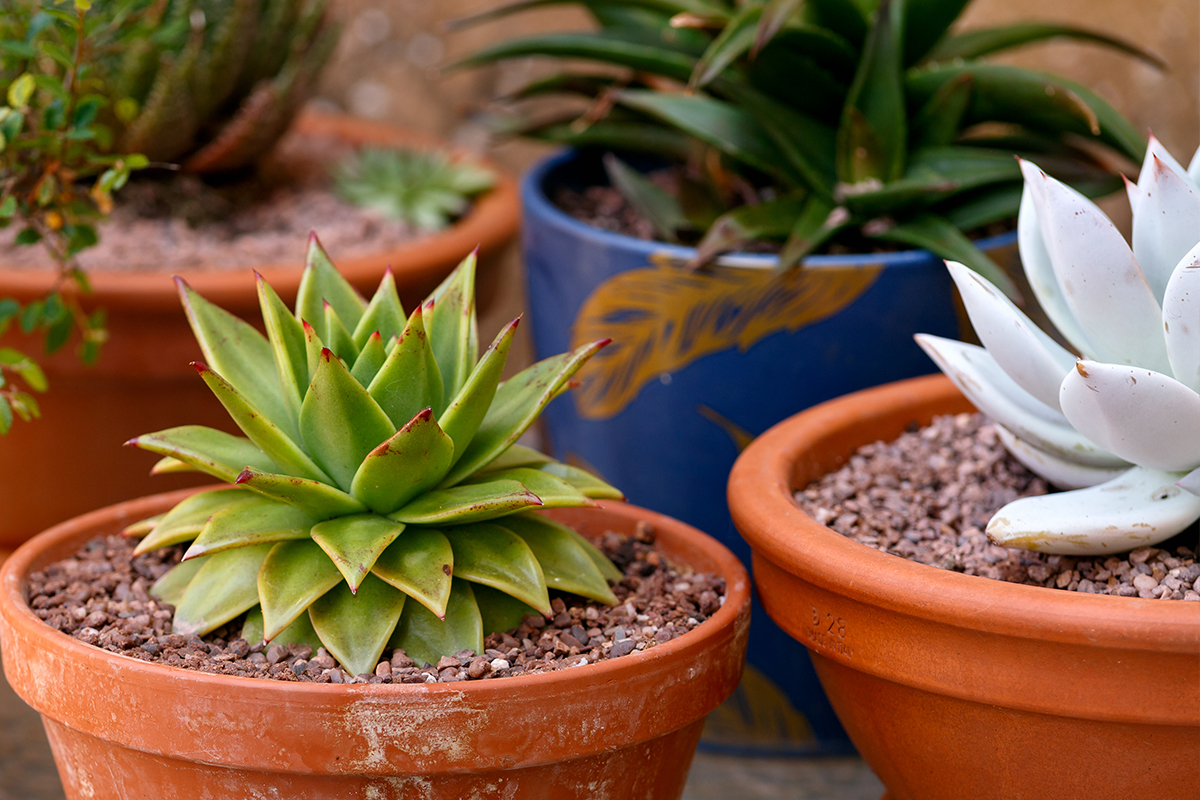
An Echeveria, or any kind of succulent, is best watered directly on the soil. Misting is okay, but depending on the environmental conditions it can cause leaves to get moldy because of the moisture or cause brittle roots due to lack of direct nourishment.
Echeverias, in particular, do not like being misted. They thrive in the semi-desert areas of Mexico and Central America, thus they do not like moist environments.
Where Should I Put My Echeveria?
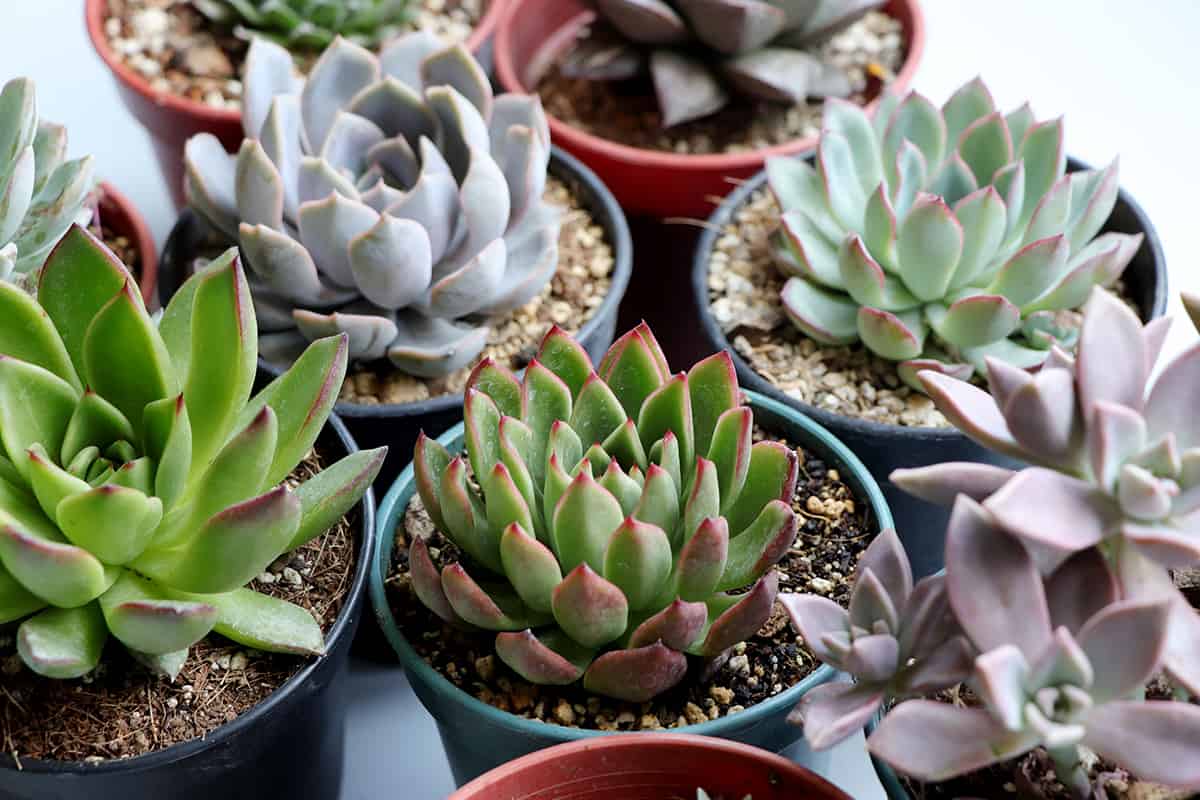
With proper care, echeverias can thrive whether indoors or outdoors. To know where to place them, map out the areas of your house where sunlight hits throughout the day.
Succulents love the morning sun the best and they can tolerate direct sunlight. Come afternoon went the sunlight can get scorching, it is best to place them in a shaded area where they can still get indirect sunlight.
If you are planting them in a pot, they are best placed near a window that received adequate outside light. You can also place them on balconies and patios where they are partly shaded but still get enough indirect sunlight.
If you don't have an area where succulents can get a lot of morning sun, many use LED grow lights to help promote plant growth even indoors.
Check out this LED full spectrum grow lights on Amazon.
If you have to grow your succulents indoors, remember that the environment is more humid so don't overwater them. Let the soil completely dry first before watering them.
If they are planted in proper soil, you don't need to fertilize them. You can leave them alone most of the time and allow their sweet time to grow slowly but surely.
How Do You Fix Leggy Echeveria?
Is your echeveria growing upwards like a tall stalk instead of tight and compact? It could be due to etiolation or stretched plant growth caused mainly by a lack of sunlight.
Echeveria that is growing upwards too fast means it is struggling to get more light from its environment. In the process, the stalk and leaves stretch in an attempt to find more light sources.
Aside from lack of sunlight, other reasons why an echeveria can get leggy include too much fertilizer, the plant pot being too big, extremely warm temperatures, or overcrowding in the plant pot.
If your echeveria starts to get leggy, don't worry, you can correc its growth, but you need to cut and propagate it. Here are the steps:
- Cut off the top part of the stem but leave a base of about 2 to 3 inches with some leaves still on it.
- Let the cutting dry out for a few days then replant it in well-draining soil.
- As for the original plant, care for it as usual and wait for new leaf sprouts to grow.
As you replant and regrow your echeveria, make sure they get adequate sunlight this time around. Otherwise, if you leave them in the same place where they are etiolated, they will grow leggy again.
Here's a helpful video on how to fix your stretched-out succulent.
Wrapping Up
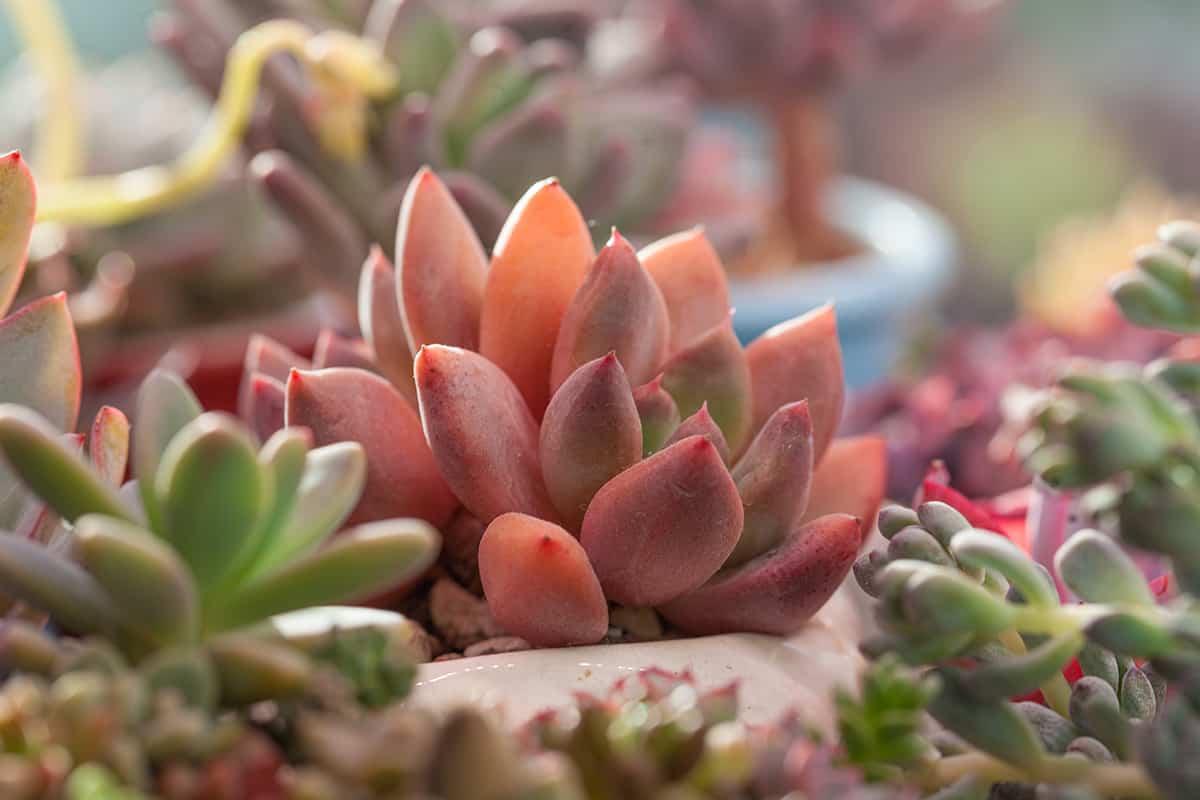
Echeveria leaves pointing upwards are normal and can be easily resolved. If the problem is lack of sunlight, place them in an area where they can get a lot of direct morning sunlight. Have a fixed schedule for regular watering and to be safe, make sure the soil is completely dry before watering.
Thank you very much for reading through. We hope we were able to give you insights on why your echeveria leaves are pointing up.
For more readings on echeveria and succulent care, check out these other articles below.
Why Is My Echeveria Dying? [With Tips On What To Do About It]
